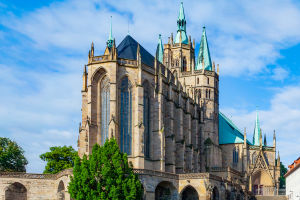The Air We Breathe
The next time you step outside and take a deep breath, think about the air around you—not just the oxygen that fills your lungs, but the intricate mixture of gases that make up the atmosphere.
The Earth's atmosphere is a dynamic, layered structure, essential for life as we know it. It provides the oxygen we breathe, regulates temperature, and protects us from harmful radiation.
But what exactly is the composition of the atmosphere, and how does it support life on Earth? Let's dive in and uncover the different layers and their key components.
The Major Gases in the Atmosphere
The atmosphere is composed of a variety of gases, each serving a unique role in sustaining life and regulating the environment. The most abundant gases are nitrogen, oxygen, argon, and carbon dioxide.
1. Nitrogen (78%)
Nitrogen makes up about 78% of the Earth's atmosphere. While it doesn't directly support life in the same way oxygen does, nitrogen is essential for life. It's a key component of proteins and DNA. Nitrogen's role in the atmosphere is also to maintain stability and prevent fires, as it dilutes the amount of oxygen available.
2. Oxygen (21%)
Oxygen is the second most abundant gas, accounting for 21% of the atmosphere. This gas is crucial for respiration and the survival of nearly all organisms. Plants also rely on oxygen during their night-time processes. Additionally, oxygen helps in combustion and contributes to the creation of ozone in the atmosphere, which shields us from ultraviolet (UV) radiation.
3. Argon and Other Trace Gases (1%)
Argon, which makes up about 0.93% of the atmosphere, is a noble gas that doesn't react easily with other elements. There are also trace gases such as carbon dioxide, neon, and helium. Despite their low concentrations, these gases have significant roles. Carbon dioxide, for example, is crucial for photosynthesis and has a major influence on Earth's climate.
The Layers of the Atmosphere
The atmosphere is divided into several layers, each with distinct characteristics. These layers vary in terms of temperature, pressure, and composition.
1. Troposphere
The troposphere is the layer closest to Earth, extending from the surface up to about 8-15 kilometers. It contains 75% of the atmosphere's mass and is where all weather phenomena, such as clouds, rain, and winds, occur. The air in this layer becomes colder with altitude, which is why the highest mountains are covered in snow.
2. Stratosphere
Above the troposphere lies the stratosphere, which stretches up to about 50 kilometers. This layer contains the ozone layer, which absorbs and scatters ultraviolet solar radiation. The stratosphere actually gets warmer as altitude increases, unlike the troposphere. This temperature inversion helps to stabilize the atmosphere.
3. Mesosphere
The mesosphere is the third layer and extends from 50 to 85 kilometers above Earth. It is in this layer that most meteoroids burn up upon entering Earth's atmosphere, creating the streaks of light we call shooting stars. The temperature in the mesosphere drops as altitude increases, making it the coldest layer of the atmosphere.
4. Thermosphere
The thermosphere extends from about 85 kilometers to 600 kilometers above Earth's surface. This layer is characterized by extremely high temperatures due to the absorption of high-energy solar radiation. The thermosphere also contains the ionosphere, where solar radiation ionizes the gases, enabling radio communication.
5. Exosphere
The exosphere is the outermost layer of the atmosphere, extending from 600 kilometers to about 10,000 kilometers above Earth. Here, particles are far apart, and the air is almost a vacuum. This layer marks the transition between Earth's atmosphere and outer space, where atoms and molecules can escape into space.
The Role of the Ozone Layer
One of the most important components of the atmosphere is the ozone layer, found within the stratosphere. While ozone is just a small part of the atmosphere, it has an outsized impact on life on Earth. This layer acts as a shield, absorbing and blocking the majority of the Sun's harmful ultraviolet (UV) radiation. Without the ozone layer, life on Earth would be exposed to dangerous UV rays, which can cause skin cancer and disrupt ecosystems.
Human Impact on Atmospheric Composition
While Earth's atmosphere has been relatively stable for millions of years, human activity has started to impact its composition. The burning of fossil fuels, deforestation, and industrial processes have led to an increase in carbon dioxide and other greenhouse gases. These gases trap heat in the atmosphere, contributing to global warming and climate change. Additionally, the use of certain chemicals, such as chlorofluorocarbons (CFCs), has led to the depletion of the ozone layer.
1. Reducing Carbon Emissions
To help mitigate these effects, reducing carbon emissions is crucial. This can be achieved through energy efficiency, renewable energy sources, and adopting sustainable practices in agriculture and industry.
2. Protecting the Ozone Layer
Efforts to protect the ozone layer, such as the Montreal Protocol (an international treaty that phased out the use of CFCs), have shown positive results. Continuing to protect the ozone layer and reducing harmful emissions will be key to ensuring a healthy atmosphere for future generations.
Conclusion: Why the Atmosphere Matters
The atmosphere is not just a blanket of air above us; it's a complex, finely tuned system that makes life possible. It provides the oxygen we breathe, regulates temperature, and protects us from harmful solar radiation. Understanding the composition of the atmosphere and its layers helps us realize how fragile and essential this protective layer is.
As we continue to impact the environment, it becomes even more important to understand how we can protect and preserve the atmosphere for future generations. By making conscious choices, we can all contribute to a healthier, more sustainable Earth.
-
 Collagen Power Facts!Why Collagen Is Essential? Can It Repair Damage Fast! What Hidden Powers Support Health?
Collagen Power Facts!Why Collagen Is Essential? Can It Repair Damage Fast! What Hidden Powers Support Health? -
 Covid-19 Health FactsWhy Do Some Heal Faster? Can Immunity Last Long! What Hidden Clues Still Puzzle Experts?
Covid-19 Health FactsWhy Do Some Heal Faster? Can Immunity Last Long! What Hidden Clues Still Puzzle Experts? -
 Erfurt: Timeless & PlayfulBridges, markets, gardens, and day trips—Erfurt's guide maps prices, timings, and routes for a playful, history-rich long weekend.
Erfurt: Timeless & PlayfulBridges, markets, gardens, and day trips—Erfurt's guide maps prices, timings, and routes for a playful, history-rich long weekend.
Copyright © zogu 2021 - 2025. All Right Reserved.